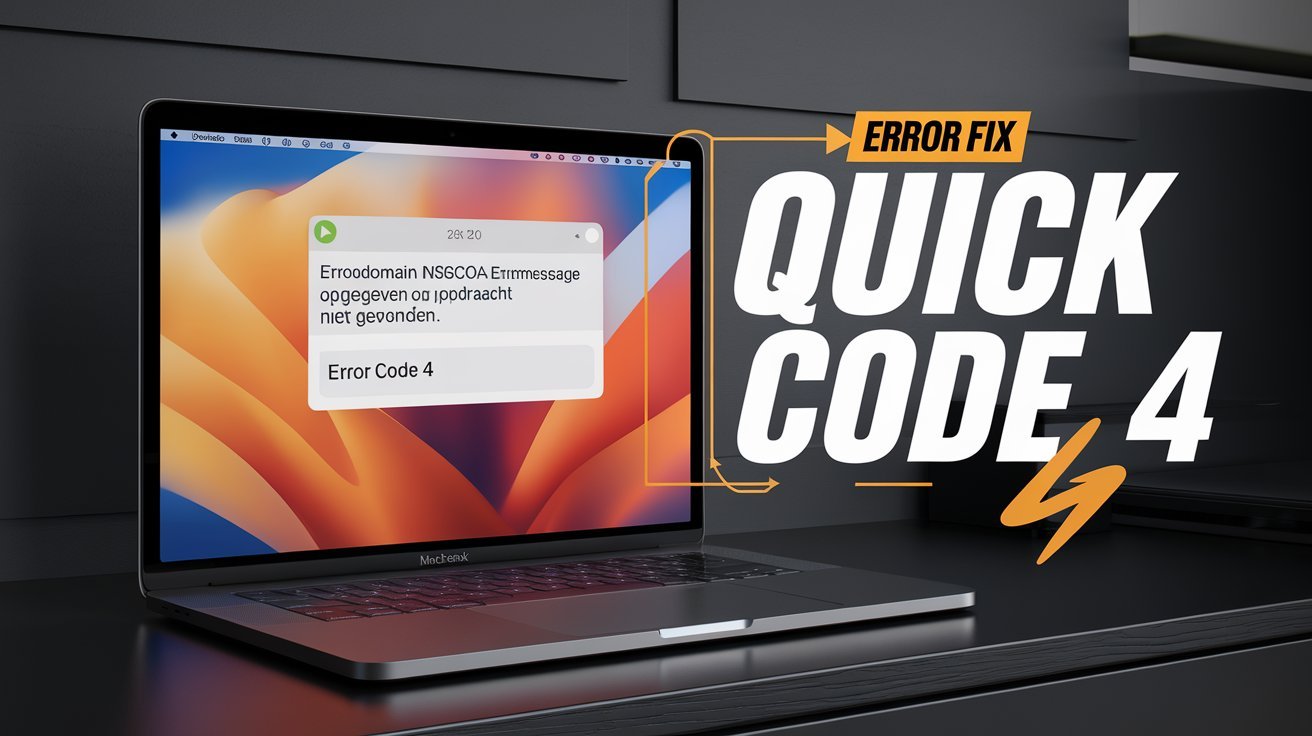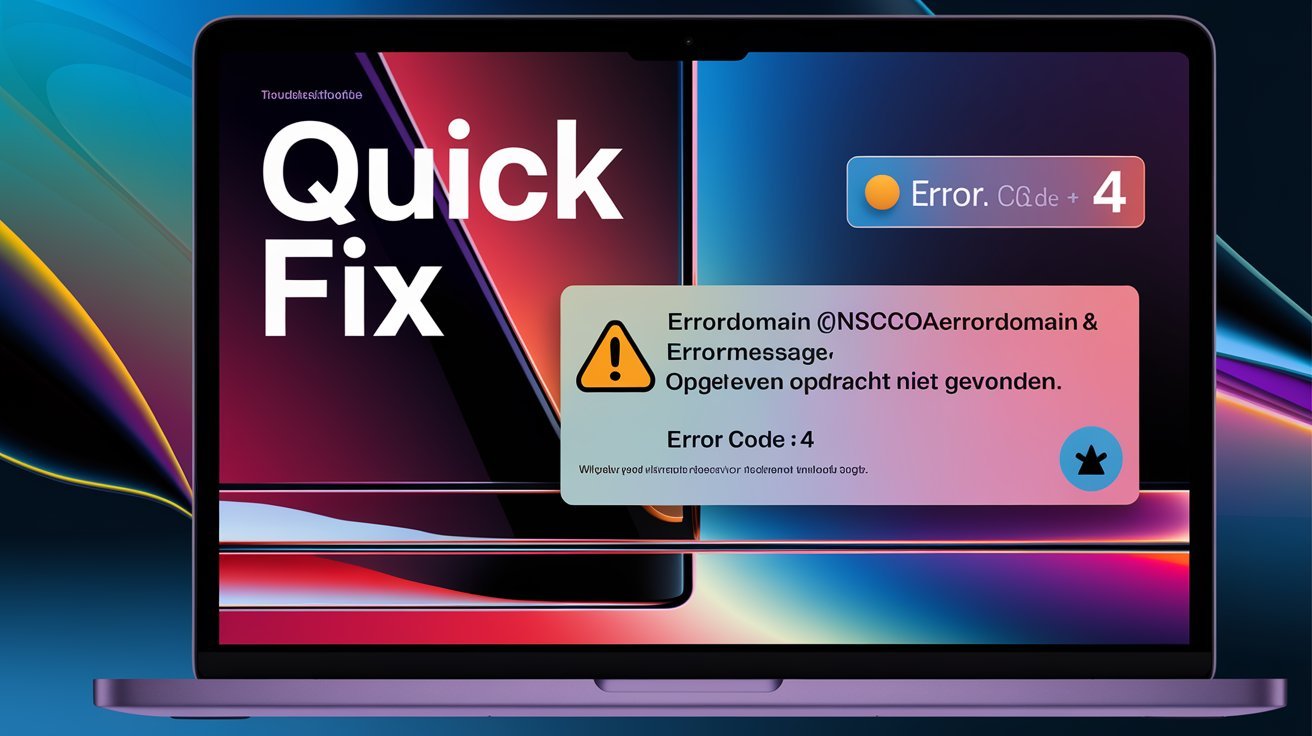1. Introduction
If you’re encountering the error message:
errordomain=nscocoaerrordomain&errormessage=opgegeven opdracht niet gevonden.&errorcode=4
you might feel frustrated trying to figure out what went wrong on your macOS system.
This error is related to the NSCocoaErrorDomain, which is part of macOS’s Cocoa framework. The message “opgegeven opdracht niet gevonden” is Dutch for “specified command not found,” indicating that the system cannot locate the requested file, command, or function.
This article will walk you through the possible causes of this error and provide step-by-step solutions to resolve it efficiently.
2. Understanding NSCocoaErrorDomain
What is NSCocoaErrorDomain?
NSCocoaErrorDomain is a system error domain in macOS, used by applications that rely on Apple’s Cocoa framework. This domain handles various macOS-related issues, such as:
- File read/write failures
- Invalid user settings
- Permissions and access control errors
Common Errors in NSCocoaErrorDomain
While Error Code 4 is a frequently encountered issue, other errors include:
- Error Code 260 – File not found
- Error Code 3840 – JSON parsing error
- Error Code 256 – Generic Cocoa framework issue
Understanding the context of these errors can help you troubleshoot them effectively.
3. Breakdown of the Error Message

This specific error consists of three key components:
- errordomain=nscocoaerrordomain → Indicates that the error originates from Apple’s Cocoa framework.
- errormessage=opgegeven opdracht niet gevonden → Dutch for “specified command not found,” suggesting a missing or inaccessible resource.
- errorcode=4 → This typically signifies a missing file, command, or function that macOS is unable to execute.
This error generally occurs in situations where:
- A file or command is expected but missing.
- A system or application function cannot be found due to misconfiguration.
- A software or macOS update has introduced an incompatibility.
4. Common Causes of This Error
1. Missing or Corrupted Files
If an application requires a file that has been deleted, moved, or corrupted, macOS may trigger this error.
2. Incorrect System Configurations
Misconfigured user preferences or system settings can cause macOS to be unable to locate necessary files or commands.
3. macOS Version Compatibility Issues
Outdated or incompatible software may not work correctly, especially if it relies on deprecated system features.
4. Third-Party Application Conflicts
Some applications might interfere with system processes, leading to unexpected errors.
5. Quick Fixes for the Error
Fix 1: Restart Your Mac
A simple restart can clear temporary glitches and reload system files correctly.
Fix 2: Verify File Paths and Directories
If a file-related function is failing, confirm that the required file is present:
- Open Finder.
- Navigate to the location where the file is expected.
- If missing, try restoring it from a backup or reinstalling the application.
Fix 3: Update macOS and Applications
Ensure that you are running the latest macOS and app versions:
- Open System Settings > Software Update.
- Install any pending macOS updates.
- Check the Mac App Store for updates to installed applications.
Fix 4: Reset Application Preferences
If an app is malfunctioning, try resetting its preferences:
- Open Finder.
- Navigate to
~/Library/Preferences/. - Locate the app’s preference file (
com.apple.YourApp.plist). - Delete the file and restart the app.
Fix 5: Repair Disk Permissions
To repair disk permissions, use Disk Utility:
- Open Disk Utility from Applications > Utilities.
- Select your main disk.
- Click First Aid and let macOS repair any errors.
Fix 6: Reinstall the Problematic App
If a specific application is causing the issue, reinstalling it can resolve missing file errors.
Fix 7: Use Terminal Commands for Troubleshooting
If permission issues are suspected, try running:
This command will check and repair disk permissions.
6. Advanced Troubleshooting

Checking System Logs
Use Console.app (found in Applications > Utilities) to check system logs for additional error details.
Running Safe Mode Diagnostics
Booting into Safe Mode can help determine if a third-party app is causing the issue. To enter Safe Mode:
- Restart your Mac.
- Hold Shift during boot until the login screen appears.
7. Preventing NSCocoaErrorDomain Errors in the Future
- Regularly update macOS and applications to avoid compatibility issues.
- Maintain backups using Time Machine to restore lost files.
- Avoid unnecessary system modifications that could break core macOS functions.
8. Conclusion
The error errordomain=nscocoaerrordomain&errormessage=opgegeven opdracht niet gevonden.&errorcode=4 typically stems from missing files, incorrect settings, or outdated software. By applying quick fixes like restarting your Mac, updating software, and verifying file paths, you can resolve the issue effectively.
For long-term stability, keep your system updated and perform regular maintenance to prevent such errors from occurring in the future.

